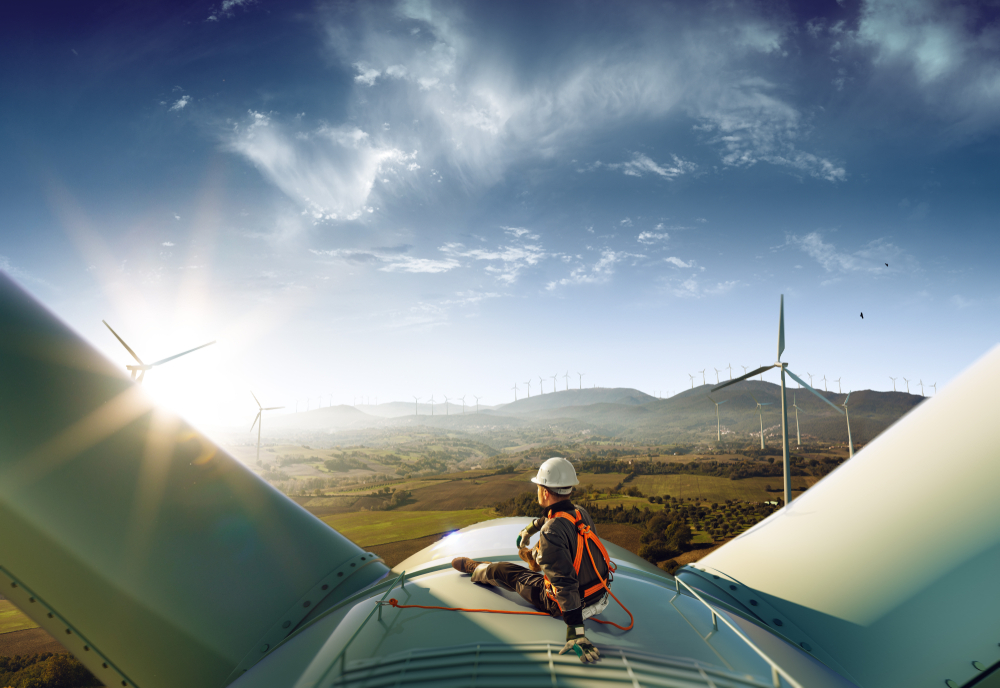A major technological and economic story of recent years has been the rapid growth of sustainable energy.
The pull of decarbonization demand from public and private entities to mitigate the impact of climate change continues to speed the transition to sustainable energy sources. More countries have strengthened their energy security and improved energy supply chain resiliency with sustainable sources due to global geopolitical conflicts involving major fossil fuel producers. Technological advances in wind, solar, and battery storage have improved the economics of sustainable energy, allowing these sources to compete with—or even outpace—other energy sources.
These trends have all played out in the U.S. and contributed to the rising importance of sustainable, clean energy sources like wind, solar, nuclear, hydroelectric, and geothermal. Recent legislative milestones, including the Bipartisan Infrastructure Law and the Inflation Reduction Act, reflect federal efforts to expedite the transition towards cleaner energy sources. Businesses operating in these sectors already constitute an expanding segment of the U.S. economy and are poised to continue this trajectory in the years ahead.
Trends in Sustainable Energy Production
Recent sustainable energy growth has been driven by gains in wind and solar
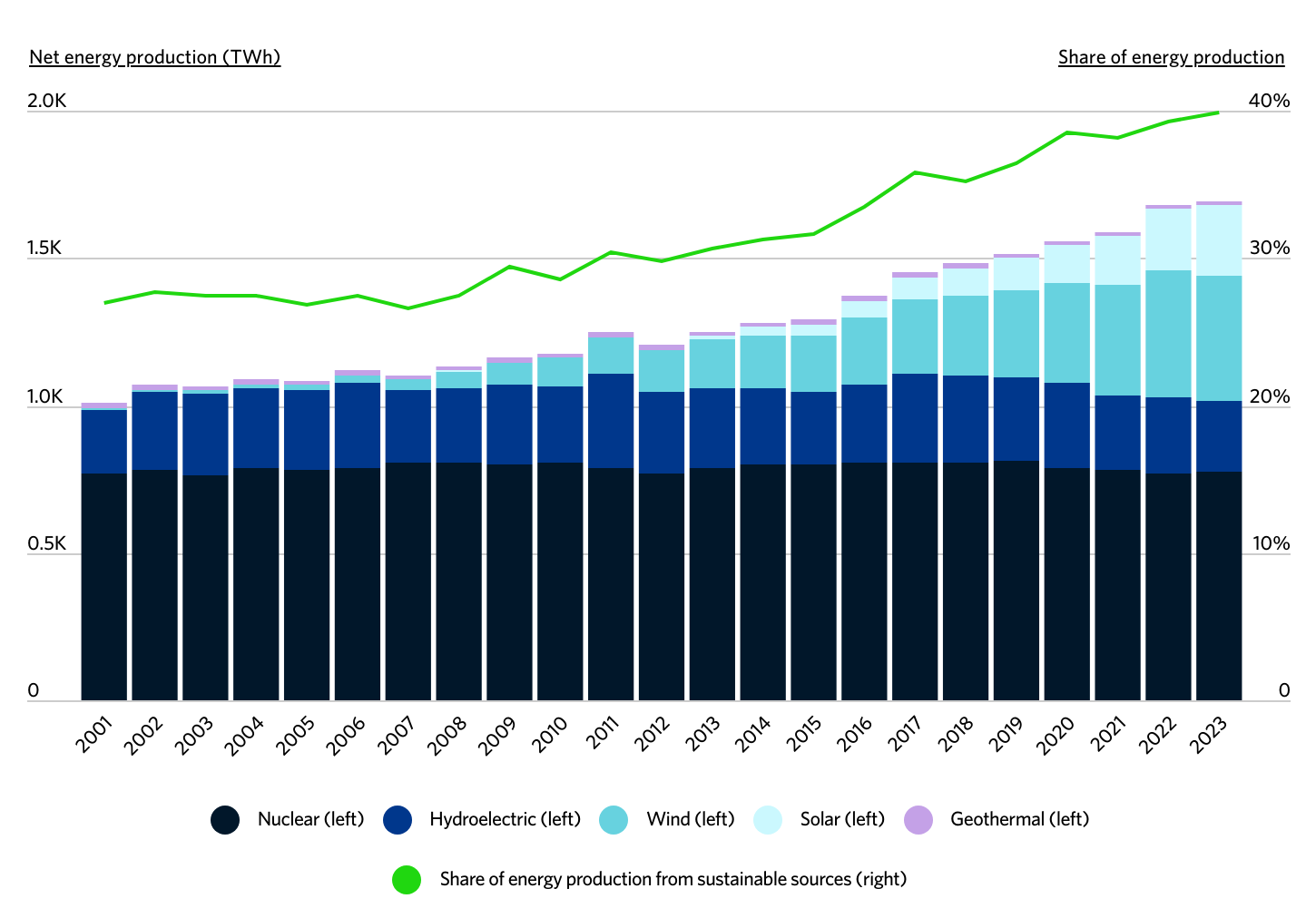
Source: Milliken analysis of U.S. Energy Information Administration data | Image Credit: Milliken
The U.S. energy landscape has included sustainable energy production for decades, but recent technological and economic shifts have contributed to growth in the sector. In the early 2000s, sustainable sources accounted for approximately a quarter of the nation’s electric energy production—primarily derived from nuclear and hydroelectric sources—collectively yielding roughly 1,000 terawatt-hours of electricity annually. However, both nuclear and hydroelectric energy have faced stagnation nationally due to concerns surrounding capital costs, construction timelines, and environmental implications, limiting new development as aging facilities are decommissioned. And despite projections for hydroelectric power generation growth this year, the increase is primarily due to higher snowpack levels rather than increased investment in hydroelectric power plants.
Instead, much of the growth in the sustainable energy sector in recent years has come from wind and solar power. Substantial government subsidies allocated to these sustainable forms of energy have played a pivotal role in reducing costs and enhancing technological efficiency. Consequently, wind and solar energy production have experienced rapid expansion. From 2001 to 2023, annual solar energy output escalated from half a terawatt-hour of electricity to an impressive 238 terawatt-hours, while wind power surged from 6.7 terawatt-hours to over 425 terawatt-hours during the same period. The growth in these two sectors has increased the share of U.S. energy production from sustainable sources to 39.9%.
Geographical Differences in Sustainable Energy Businesses and Output
California, Texas, New York, and Florida lead the country in sustainable energy production businesses
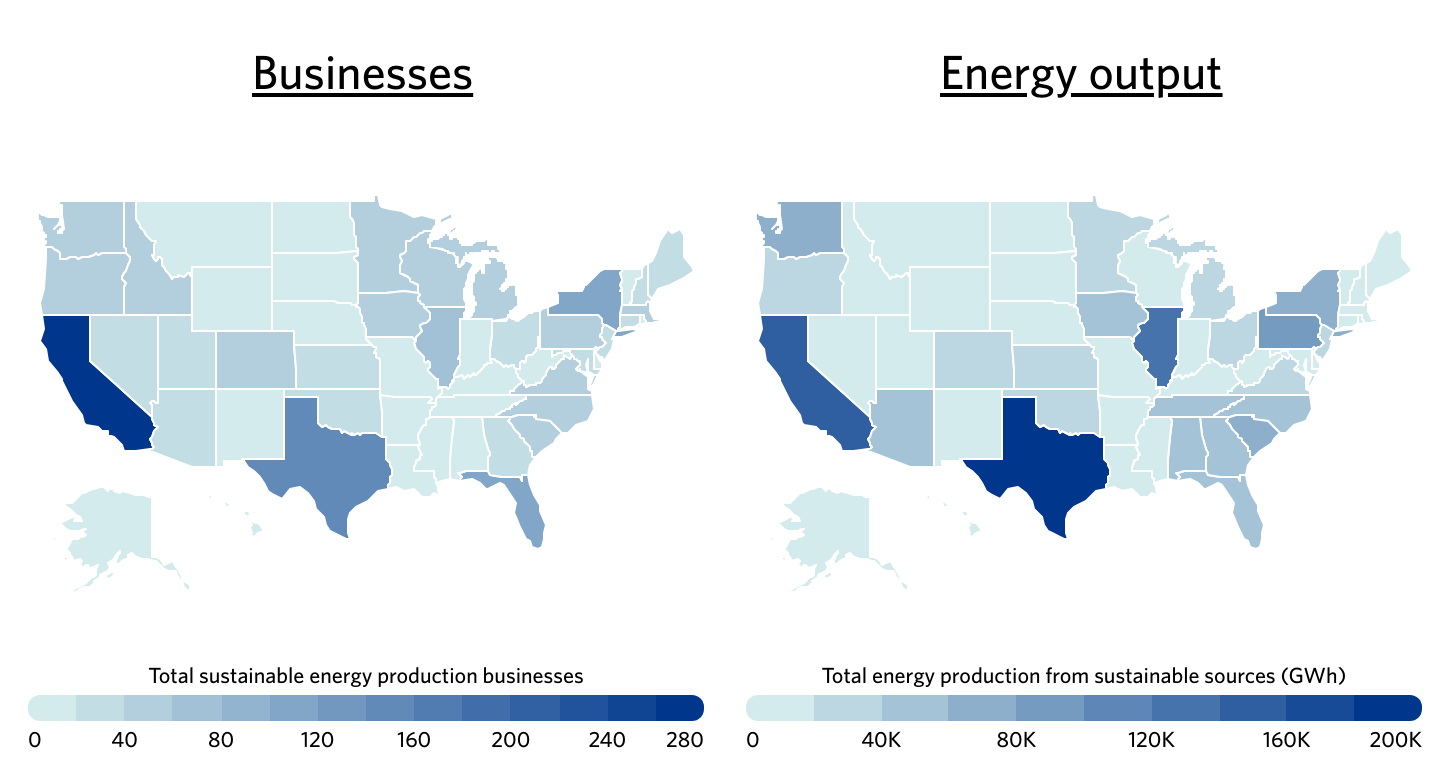
Source: Milliken analysis of U.S. Census and U.S. Energy Information Administration data | Image Credit: Milliken
Certain states within the U.S. have emerged as frontrunners in leveraging the expansion of sustainable energy enterprises. Notably, California and Texas lead in both the total number of sustainable energy businesses and overall sustainable energy production. Government policies, including incentives, and a robust technology sector supported California’s growth in solar energy. With 266 businesses in the sector, it is the nation’s leading state for sustainable energy production businesses. Meanwhile, Texas stands out as the nation’s top sustainable energy producer, annually generating 193 terawatt-hours, leveraging its geographically advantageous landscape conducive to both wind and solar energy production. Other states with enabling government policy or favorable geographic attributes, such as New York and Florida, also have strong sustainable energy sectors.
Areas Where Sustainable Energy Production Is the Most Prominent
The share of energy production businesses primarily using sustainable energy is highest in the Northwest and New England
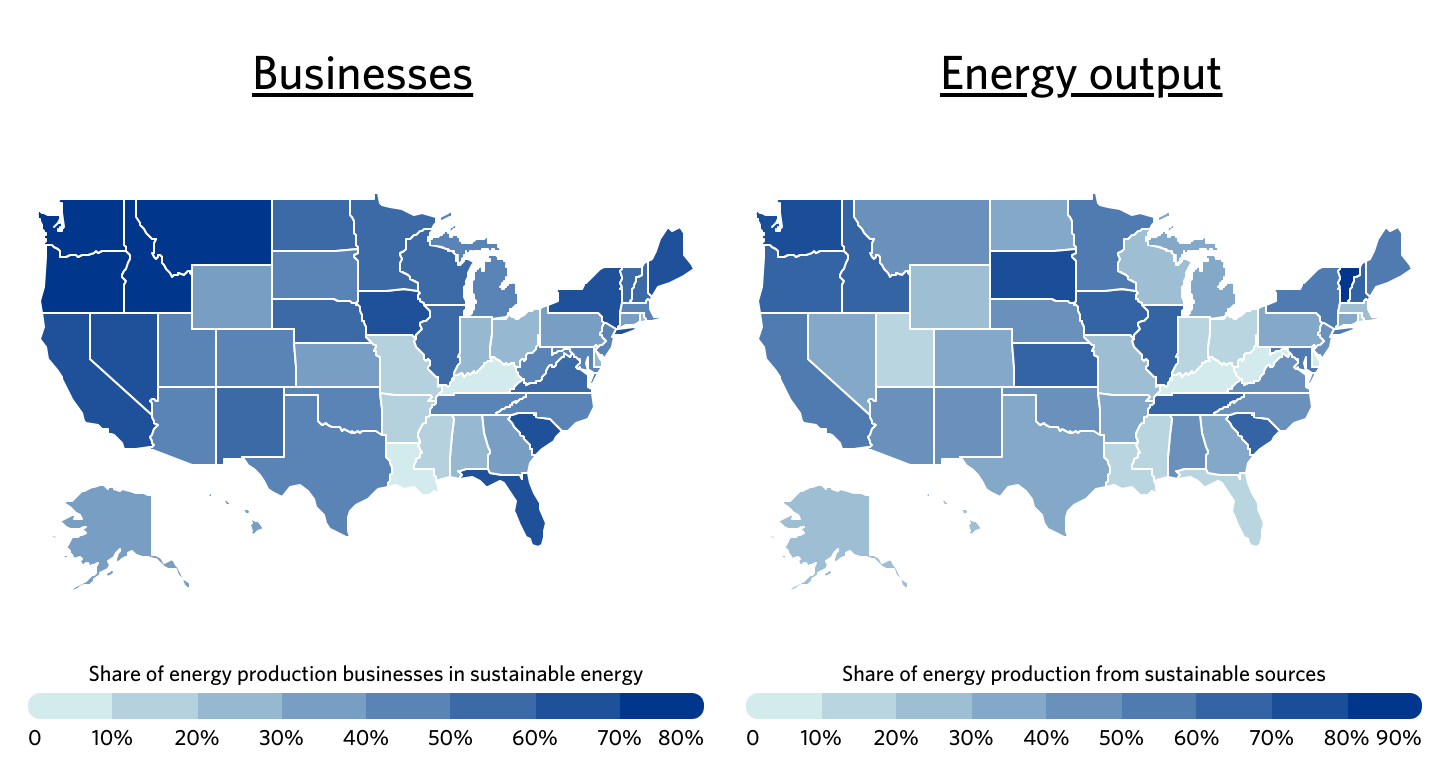
Source: Milliken analysis of U.S. Census and U.S. Energy Information Administration data | Image Credit: Milliken
States differ, however, in the share of their energy economies attributable to sustainable sources. For instance, despite Texas’s high number of sustainable energy businesses and substantial sustainable energy generation, the Lone Star State only receives about one-third of its overall energy output from sustainable sources, and less than half of its energy production businesses are primarily focused on sustainable sources. Conversely, Western states like Washington, Idaho, and Oregon, which have well-established hydroelectric power industries, and New England states like Vermont and New Hampshire, which tend to be more environmentally progressive, all report greater shares of energy from sustainable sources and have a larger proportion of energy businesses focused on sustainable production.
Notably, while states in the South typically have lower concentrations of sustainable energy production companies and sustainable energy output, South Carolina stands out as an outlier. It is the only state outside of the Northwest and Northeast where more than 60% of both energy production businesses and energy production output are attributable to sustainable, carbon pollution-free sources.
Below is a state-level breakdown of the share of energy production businesses in sustainable energy, where sustainability is classified as energy produced from hydroelectric, solar, wind, geothermal, or nuclear technologies. The analysis was conducted by Milliken, a global manufacturing leader focused on sustainability, using data from the U.S. Census Bureau and the U.S. Energy Information Administration. For complete results, see States Most Focused on Sustainable Energy Production on Milliken.
States Most Focused on Sustainable Energy Production
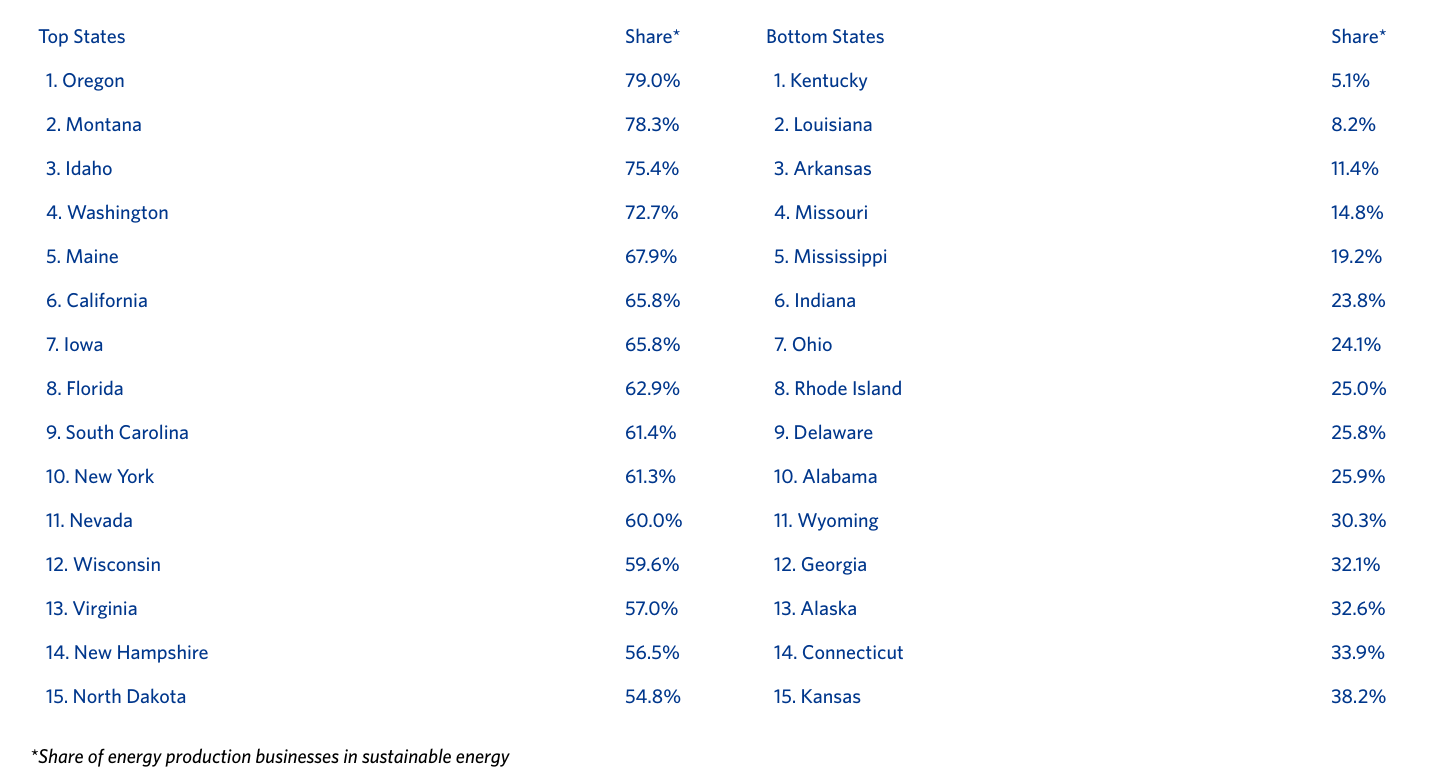
Methodology
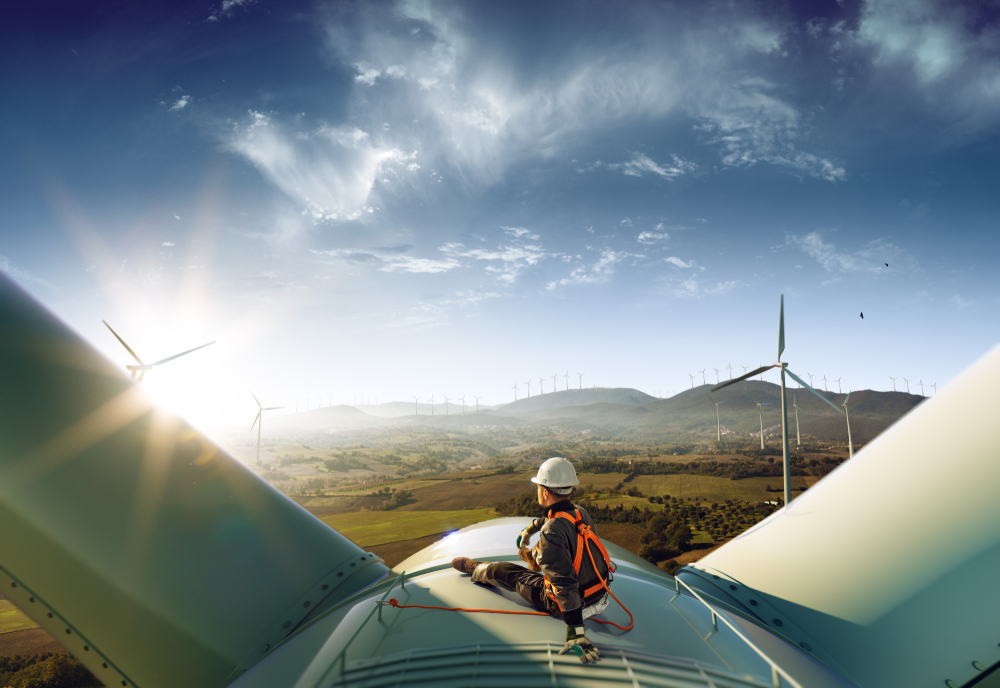
Photo Credit: Oleksii Sidorov / Shutterstock
The data used in this analysis is from the U.S. Census Bureau’s 2022 County Business Patterns and the U.S. Energy Information Administration’s 2023 Electricity dataset. To find the states with the most businesses focused on sustainable energy production, Milliken calculated the sustainable energy production businesses as a percentage of all energy production businesses. Sustainable energy production businesses were considered to be those classified by the North American Industry Classification System (NAICS) as:
- Hydroelectric Power Generation (221111)
- Nuclear Electric Power Generation (221113)
- Solar Electric Power Generation (221114)
- Wind Electric Power Generation (221115)
- Geothermal Electric Power Generation (221116)
Sustainable energy production, or carbon pollution-free electricity, was considered to be any electricity generation that does not directly emit carbon dioxide, including: nuclear, conventional hydroelectric, wind, solar, and geothermal energy. Milliken also calculated the share of energy production employment in sustainable energy, the share of energy production payroll in sustainable energy, the share of energy production from sustainable sources, the change in energy production from sustainable sources from 2018 to 2023, and the largest sustainable energy source in each state.
While the analysis predominantly delves into the technical aspects of sustainable energy production and its efficacy in curbing carbon emissions, it is crucial to acknowledge a broader perspective. Milliken recognizes that sustainable energy encompasses more than just carbon reduction; it extends to the impact on biodiversity, pollution, local communities, worker wages, and other social aspects of energy production.
For complete results, see States Focused on Sustainable Energy Production on Milliken.
